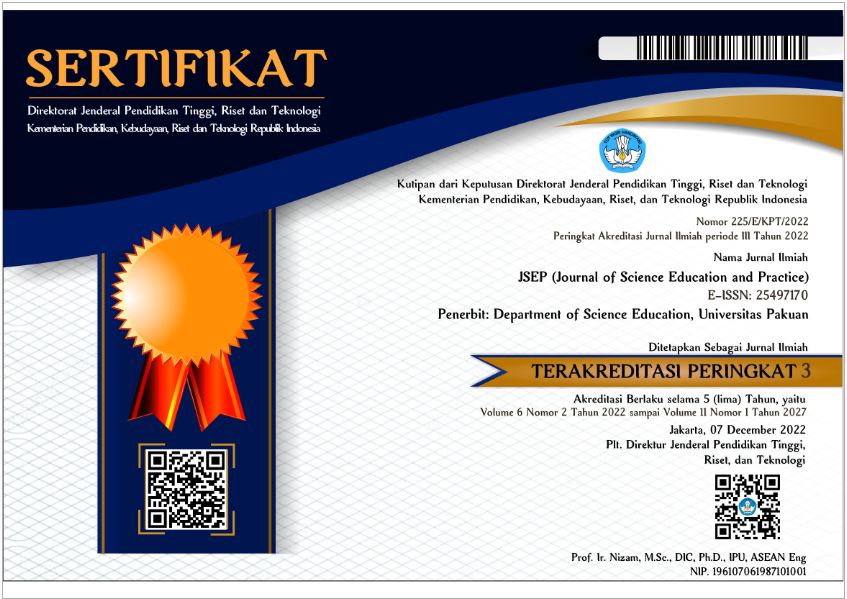ADDITIONAL MENU
Development of Learning Media for Formalin Test Teaching Aids To Increase Interest in Learning and Chemical Literacy of Smk Students
Abstract
Keywords
References
Boddey, K. & Berg, Kd (2015). The impact of nursing students' prior chemistry experience on academic performance and perception of relevance in a health science course, Chemistry Education Research and Practice, 16, 212-227.
Buhari, B. (2011). Four-D Model (Learning Device Development Model from Thiagarajan, et al.
Chuang, TY & Chen, WF, (2007) Effect of Digital Games on Children's cognitive achievement, Journal of Media, 2 (1), 27 - 30
Education and Culture, (2001) Guidelines for Making Simple Chemistry Teaching Aids for Jakarta High Schools
Permendikbud No. 70, (2013) Basic Framework and Curriculum Structure of Vocational High Schools/Vocational Madrasah Aliyah
Rahayu, S, (2017). Optimizing the Literacy aspect in 21st Century Chemistry Learning. Proceedings of the National Seminar on Chemistry, UNY Journal of chemistry education, State University of Malang
Regeista, F et al, (2014). Performance Test Tool "Digital Formaldehyde Meter" Detecting Formalin Content in Food. Journal of Tropical Agriculture and Biosystems Engineering .2(2), 97-103
Robert E. Yager, (1985) Patricia E. Simmons and John E. Penick, Student Perceptions of the Usefulness of Schopl Science Experience, School Science and mathenatics
Shwartz Y., Ben-Zvi R. and Hofstein A. (2006) Chemical literacy: what it means to scientists and school teachers? Journal of Chemical Education, 83 (10), 1557-1558
Toharudin, et al (2014), Building Science Literacy for Humonariora Students, Bandung
Widiatmoko, A & Nurmasita, S. (2013). Design Simple Technology as a science teaching aids from used materials journal of Environmentally Friendly processes. 1(1),45-47
Yael Shwartz, et al. (2006). The Use of Scientific Literacy Taxonomy for Assessing the Development of Chemical Literacy Among High School Students. The Department of Science Teaching, The Weizmann Institute of Science, Rehovot
Yager, RE (1992). Science Education International, The STS Aproach Parallels Constructivist Practice. Science
Arini, (2017) Development of local wisdom-based chemical teaching aids as a medium for learning chemistry for class XI, Proceedings of the 2017 UNY Chemistry National Seminar
Arsyad, A. (2013). Learning Media. Jakarta: PT. RajaGrafindo Persada Hardjana., (1994), Tips for Success in College. Yogyakarta: Kanisius
Kahar.MS (2017). Analysis of Student Interest in Using the Cavendish Balance Sheet. Science Education Journal 1 (2),73-83
Shehabudin, A (2018). The effectiveness of the use of teaching aids to increase student achievement in the material for building flat sides (cubes and blocks). Variant Journal. 1(2),2581-2587
DOI: 10.33751/jsep.v5i2.5700
 Abstract views : 346
Abstract views : 346
Refbacks
- There are currently no refbacks.
Copyright (c) 2021 JSEP (Journal of Science Education and Practice)

This work is licensed under a Creative Commons Attribution 4.0 International License.












